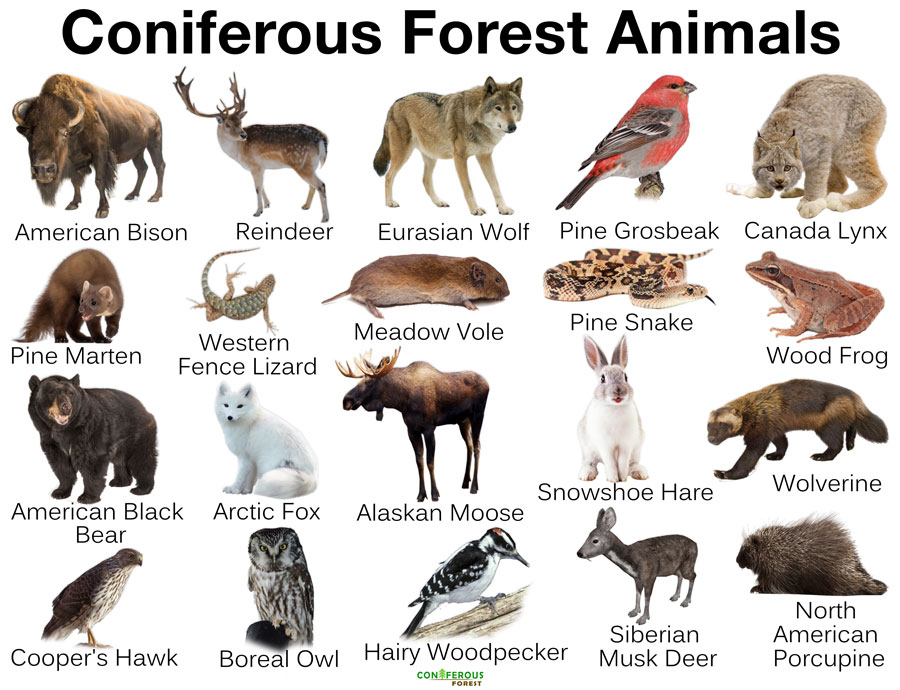Coniferous Forest Animals
Coniferous Forest Animals: Discover the Diverse Species Thriving in Evergreen Ecosystems
Imagine stepping into the heart of a dense, towering forest, where creatures of all sizes move in harmony with the towering trees. From elusive predators like the Canada Lynx to tiny, industrious Siberian Chipmunks, the Coniferous Forest is home to a remarkable variety of wildlife. Each species, with its unique adaptations, plays a vital role in maintaining the delicate balance of this diverse and resilient ecosystem.
The Rich Biodiversity of Coniferous Forests
The Coniferous Forest is one of the richest ecosystems on Earth, providing shelter and sustenance to countless species of animals. Despite the challenging climates of these evergreen woodlands, from the cold winters of the northern latitudes to the dry, mountainous regions, life flourishes. These forests are home to some of the world’s most iconic wildlife, including bears, deer, hawks, and even elusive predators like the Bearded Vulture. Each animal has adapted in its own way to survive and thrive in this unique environment, making these forests not only breathtaking but essential to maintaining biodiversity.
Ecological Roles: How Animals Maintain Forest Balance
The animals of the Coniferous Forest are more than just residents—they are essential contributors to the health and vitality of the ecosystem. From the large herbivores like moose and bison, who help shape the landscape, to the apex predators that maintain balance, each animal has a crucial role to play. Birds, reptiles, and even insects contribute to the intricate web of life that exists within these forests, making it a thriving habitat despite the often-harsh conditions. As we face the impacts of climate change and habitat destruction, understanding the vital role of these animals in the coniferous ecosystem is key to preserving them for future generations.
Despite the often-harsh climates and relatively sparse vegetation, the coniferous forest range is home to countless invertebrates, small and big land animals as well as birds. All the species living here have distinct food habits and special adaptations that enable them to survive.
Some grow thick winter coats to stay warm and move even in deep snow, while others hibernate. Most birds living in these regions are migratory, so, they fly to warmer regions to escape the chilly winters.
Insects of the Coniferous Forest |
| Pine Beetle |
Summary: Preserving the Wildlife of Coniferous Forests
The Coniferous Forest provides a habitat for a diverse range of species, each playing a unique and vital role in maintaining ecological balance. These forests are home to creatures that help pollinate, disperse seeds, control insect populations, and maintain the health of plant life. Understanding and protecting the animals that thrive in these ecosystems is critical for ensuring their survival amidst environmental challenges. With thoughtful conservation efforts, we can ensure that these remarkable creatures continue to roam the forest floor, soar above its canopy, and thrive in the wild spaces that are so essential to the health of the planet.



